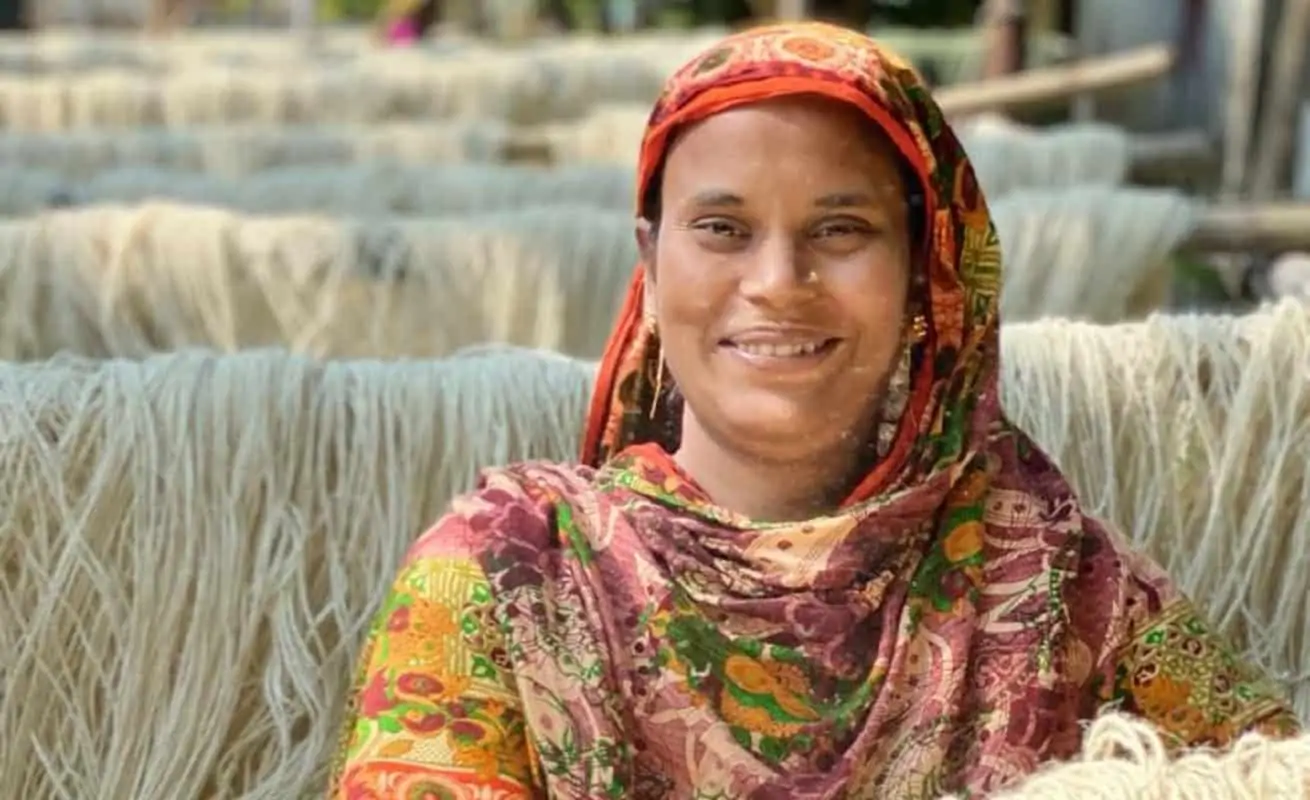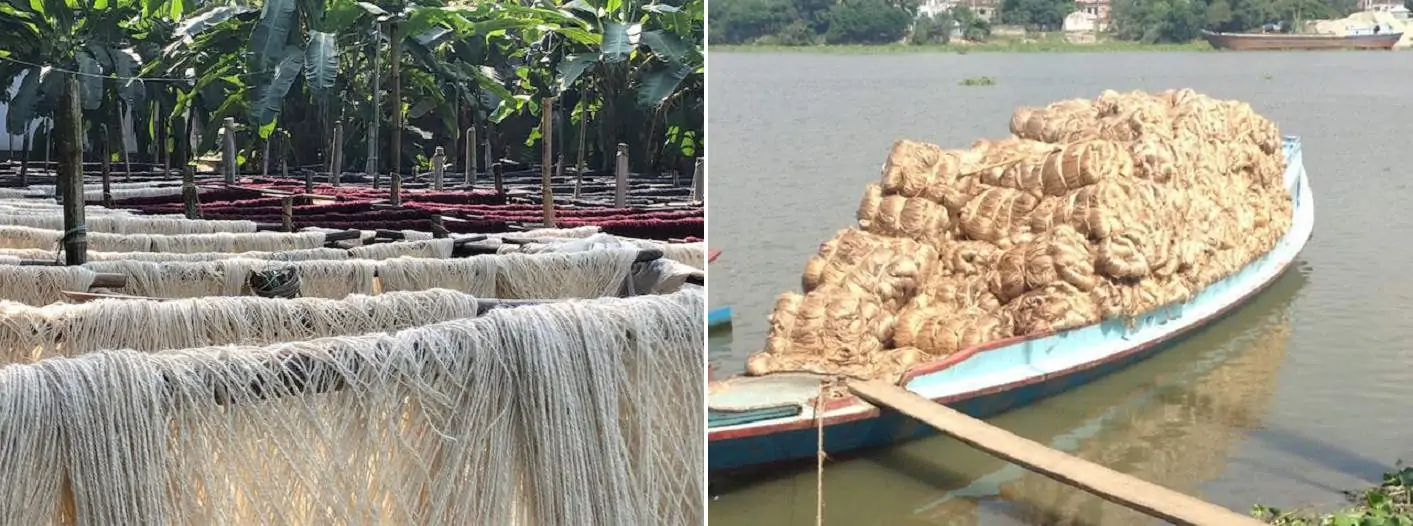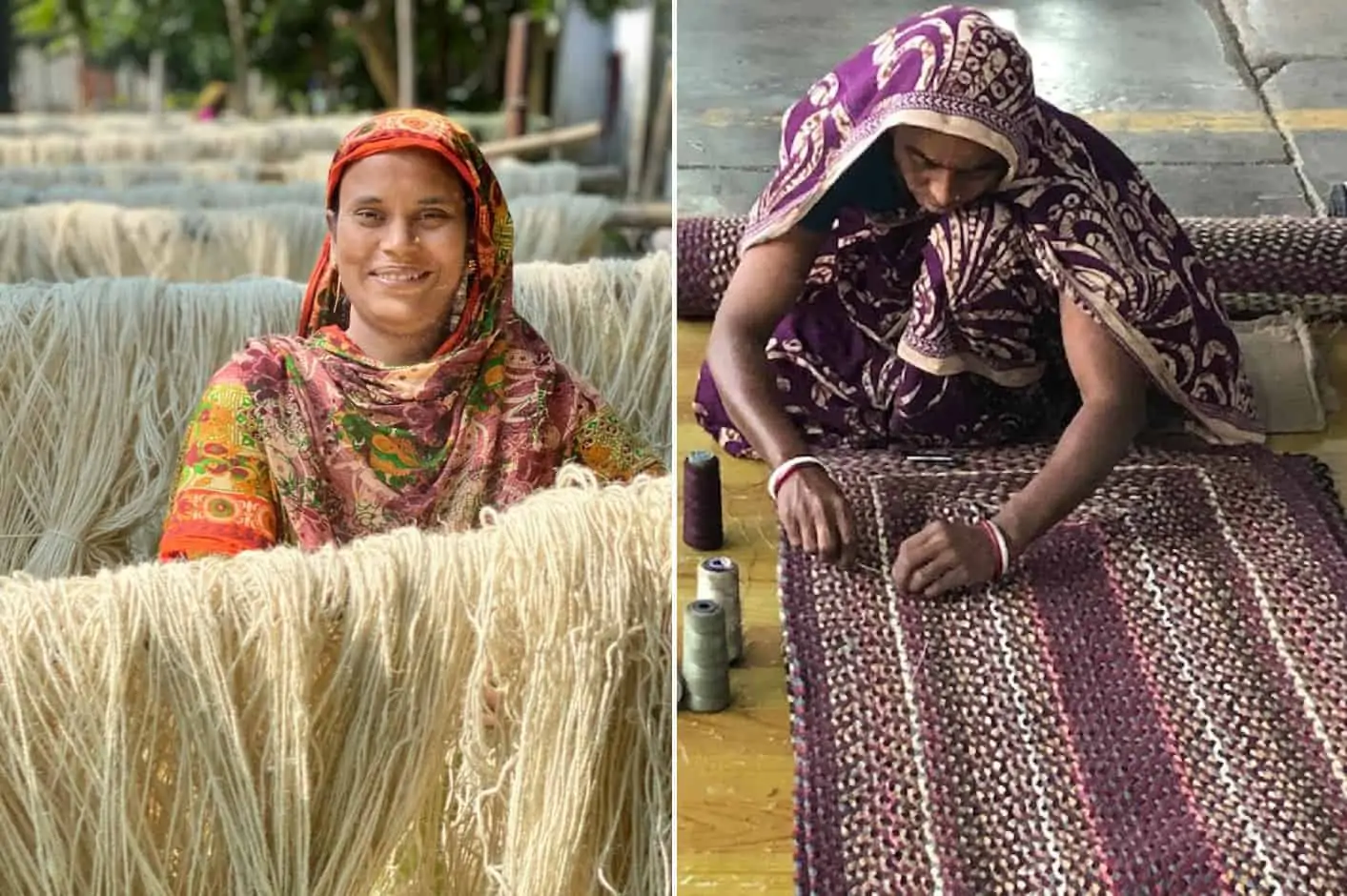
If you’re as passionate about the planet and great interior design as we are, you’ll have certainly heard about or even harnessed the beauty of jute in your own home. Just like our alpaca wool, organic jute is one of nature’s miracle fibres.
There’s so many reasons to love this golden wonder. It’s utterly stunning and made for homes of all shapes and sizes, and we can’t get enough of it. But there’s more to jute than its great looks. Here we delve deeper into this wonderful, versatile and entirely natural fibre so you can realise the joys of jute for yourself.
What is jute made of?
The jute we know and love is sourced from the stems of a tropical, Old World plant of the same name. These long, soft and shiny plants couldn’t be more different from the finished jute products that will arrive at your home. We’ll let WorldAtlas explain more about the jute plant in its most natural form:
“The jute plant, a native of the Indian subcontinent, is a herbaceous annual growing to a height of around 10 to 12 feet with a central cylindrical stem, and 4- to 6-inch long light green leaves and yellow flowers. The jute fibers are located beneath the bark, primarily concentrated near the woody, central parts of the stalk. The two species of the jute plant do not differ much except in terms of quality of the jute fibers, growing habits, and the shapes of their respective seed pods.”

The roots of the jute industry
Jute plants hail from Asia, and have been grown for centuries in the Bengal area of India, Bangladesh and Pakistan. Despite its tropical roots, the jute trade has a long history here in the UK.
From the 17th century, the British Empire’s links to India saw jute flow into the country thick and fast, as even then people began to realise the rewards of jute products. During the 19th century, jute was so popular that a factory in Scotland began trading and processing raw jute, and with this, the Dundee jute industry was born.
The Dundee based factory was owned by Margaret Donnelly, who was responsible for setting up the first jute mills in India. Thanks to Margaret, jute was being spun and weaved on home soil for the very first time.
The first jute products produced in Dundee left a lot to be desired however, but as time went on and experience grew finer fabrics used to make burlap or hessian were being lovingly crafted by Scottish locals. At one time, the jute industry was the city’s largest employer. The demands during the World Wars meant business boomed for the Dundee jute industry. After this, trade declined until the jute industry completely disappeared from Dundee.
Why you should love jute
When some people think of jute, they think of twine, rope and burlap sacks. These days, jute’s durability, versatility and affordability, not to mention its super stylish designs, make this fibre an excellent home accessory choice in every room.
Jute isn’t just great for your home, it’s good for the planet. Jute is 100% biodegradable, highly sustainable and renewable. Jute plants are naturally cropped three times a year and require zero fertilizers or pesticides so they’re especially kind to the planet. Jute plants also need very little water, which in an era of water conservation is fabulous news!
Jute plants reduce pollution and clean the air too. Recent research revealed that amazingly one hectare of jute absorbs approximately 15 tons of carbon dioxide and emits 11 tons of oxygen during growing season.
Throw in the fact that woven jute is super soft and durable enough to withstand those little and big dramas at home (even years of muddy foot or paw prints), and you’re onto a winner with this wonder fibre.

So Cosy’s jute story
Our jute homewares are all lovingly crafted in Bangladesh, a country where jute naturally grows. The factory we collaborate with has been doing what they do for some 30 years, and puts the welfare of their workers at the very top of their list of priorities.
Once the jute plants have been processed by their team, the yarns are dyed using the highest quality, EU standard dyes. Our jute products are nature’s best, but we choose not to use natural dyes. Whilst all dyed jute has a tendency to fade in sunlight, natural dyes would start fading almost immediately.
We use machines to dye our yarns and let nature do the rest with a quick dry in the fresh air. Then the creativity really kicks in! The stunning braiding that makes up our jute products is done by machines. While our rugs are sewn together individually like a coil of rope using a zig-zag sewing machine stitch.
We visit our jute factory as often as we can to ensure we’re always in the loop. We were actually there in December and organised a special picnic for the whole factory!
Find out more about why you should buy from us or go straight to the fun part by shopping our jute homeware collection right here.